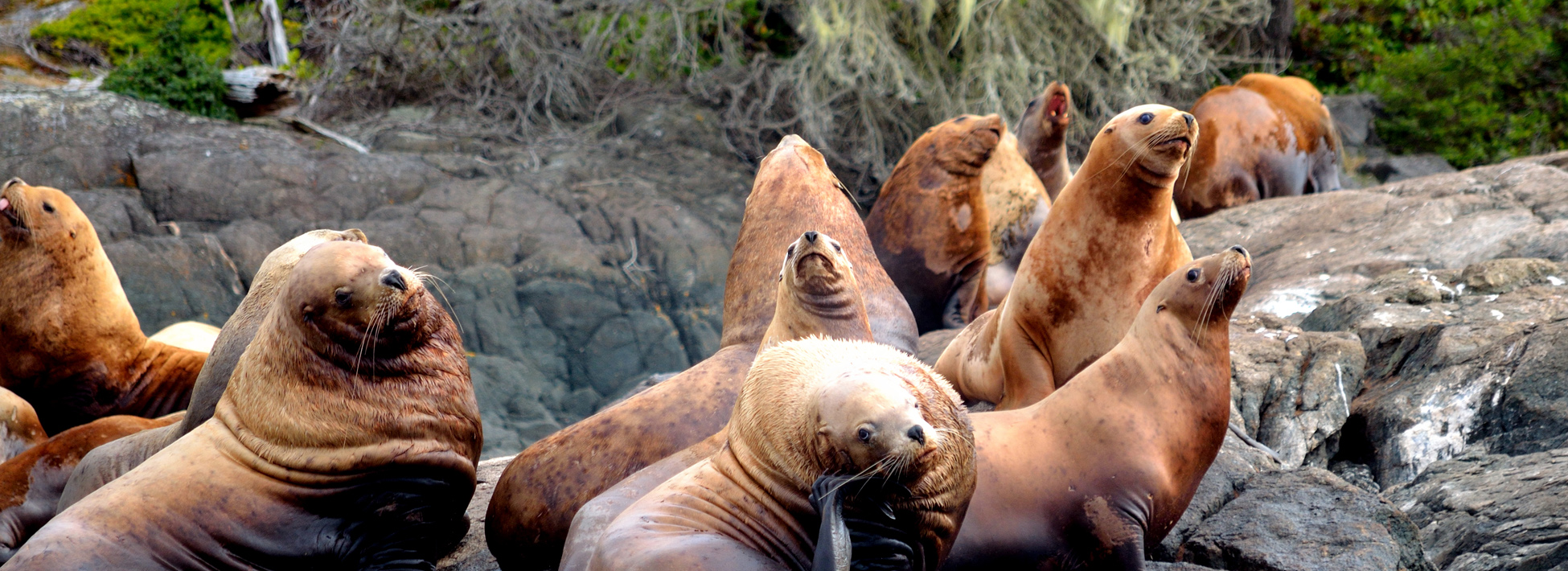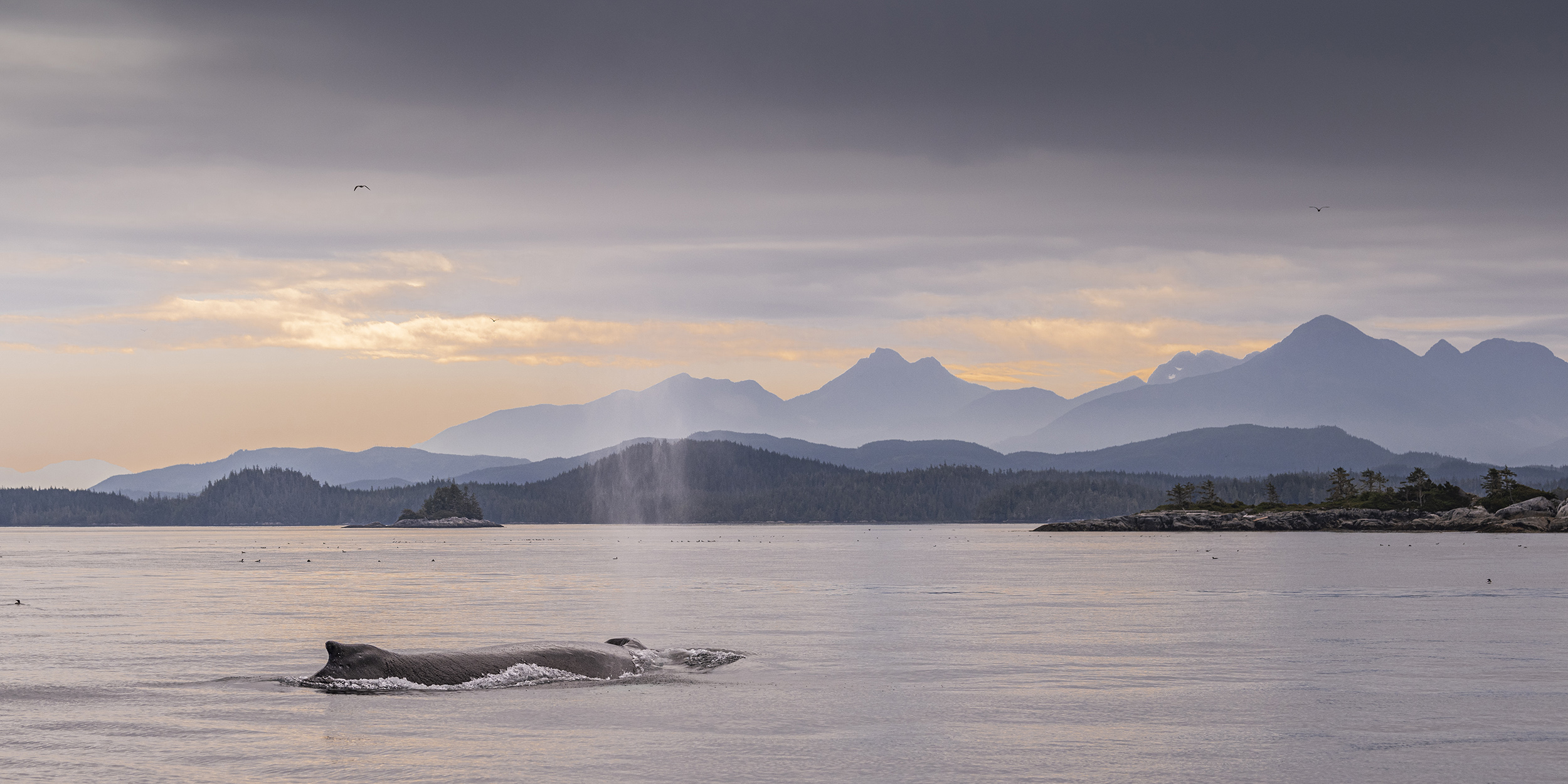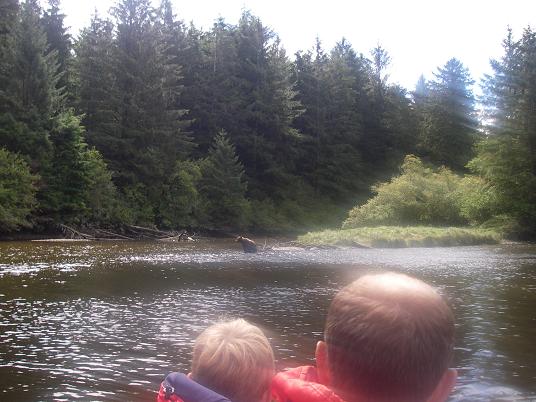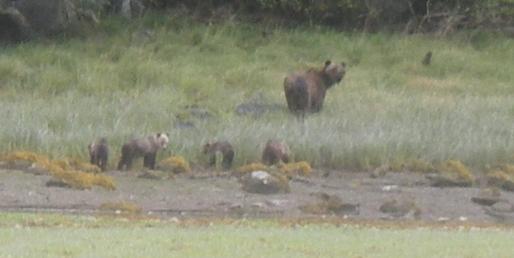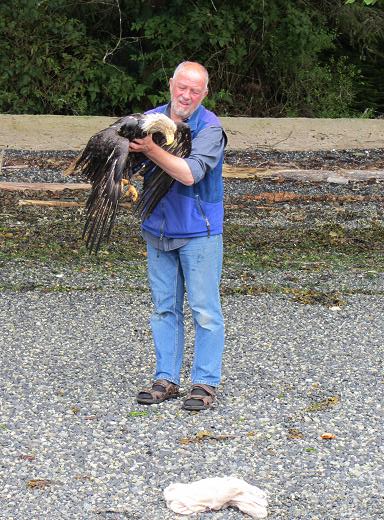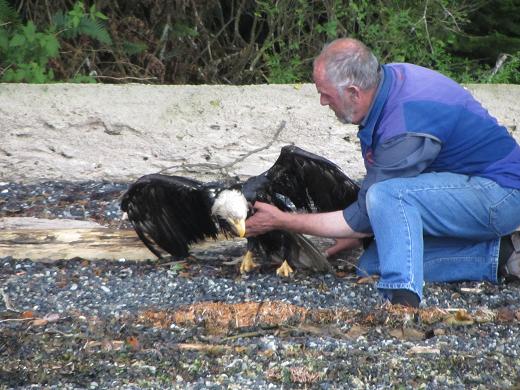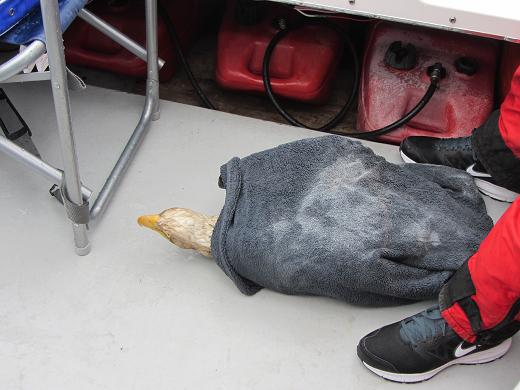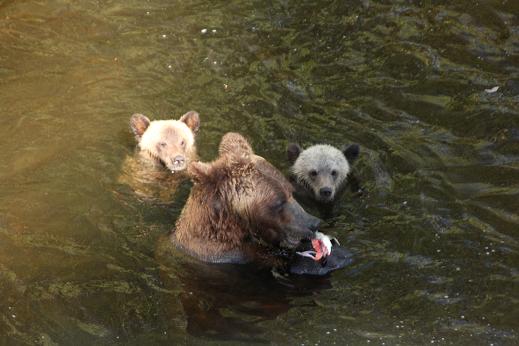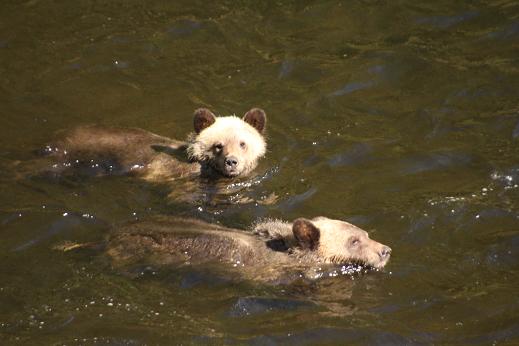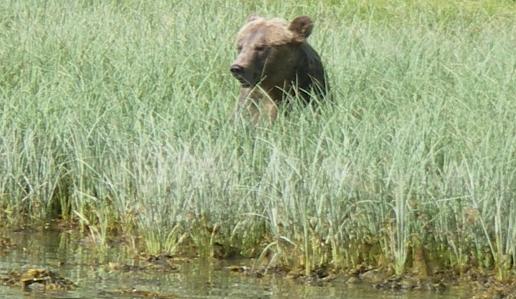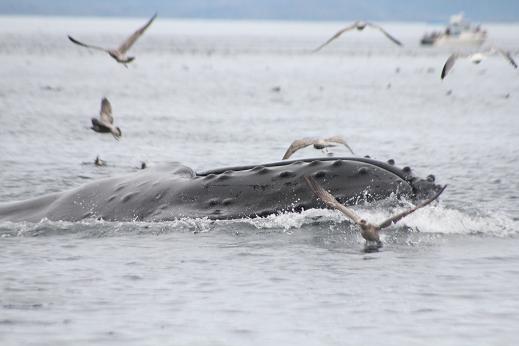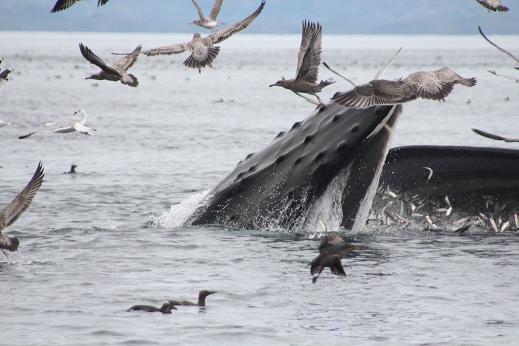Not much of a close up but the story is great. The guests are in a 5.5 meter (yard) skiff we use to watch grizzly bears on the Glendale River. We were moving slowly up the river (slowly because the motor is off and you are being towed by your guide) and had stopped watch a bear that moved around the point behind the bear in the photo. To the right of the guest’s head is another channel off to the right and this bear came out of the channel chasing a salmon. In all the splashing water the bear lost the salmon about 15 meters (yards) from the boat. It stopped, looked at us and then walked over to the point and continued to fish. No one got a good photo but I learned about the guests “comfort zone” and backed a little ways down the river and thus the photo.
